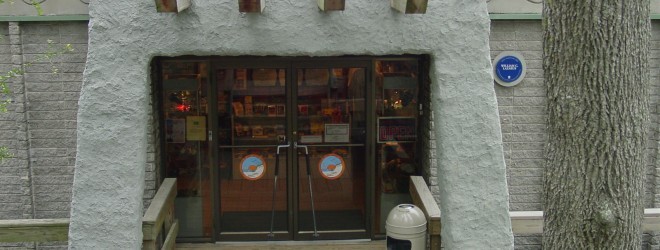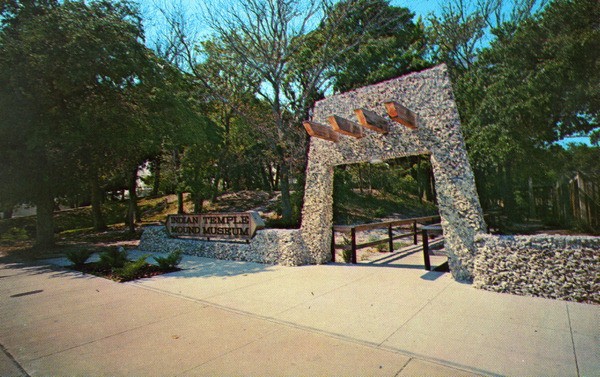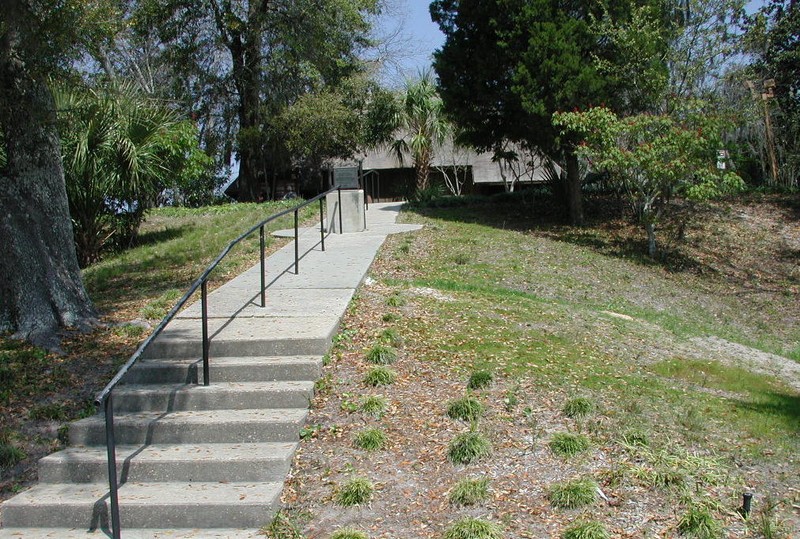Fort Walton Mound (Indian Temple Mound Museum)
Introduction
Text-to-speech Audio
The Fort Walton Mound is a Pensacola culture earthen mound thought to have been built circa 850 C.E. According to archaeologists, the mound was used for ceremonial purposes and as the chief's residence. The mound is 12-feet-tall and 233-feet-wide and is possibly the largest mound on the Gulf Coast. It is located on the grounds of the Indian Temple Mound Museum, which features exhibits that explore the 12,000 years of natural and human history of the area.
Images
The entrance to the Indian Temple Mound Museum

The entrance to the mound and museum site

Stairs leading up to the top of the mound

Backstory and Context
Text-to-speech Audio
Fort Walton Mound is an archaeological site located in the city of Fort Walton Beach, Florida. It is possibly the largest mound on the Gulf Coast. Constructed circa 850 C.E., the large earthenwork mound is attributed to the Pensacola, a culture related to the Mississippian cultures that inhabited the central
and southeastern parts of the United States. The mound is 12-feet in height and 233-feet in width. It is estimated
that around 200,000 basket loads of dirt were used in its construction.
It is possibly the largest mound on the Gulf Coast.
The Pensacola natives were an advanced, hierarchical society. According to archaeologists, the mound was used for ceremonial and political purposes. The top of the mound would have served as the location of the chief's residence was located, as evidenced by the post holes; structures on the mound were probably constructed utilizing wattle and daub. This mound features a pyramidal base with a truncated top, typical of the architectural fashion of the period. It occupied a central position in the village and its supporting agricultural lands. Village leaders were buried in the mound, and additional layers of material added over time.
The site was abandoned by 1500 C.E. and the mound was essentially forgotten until the Civil War. In 1861, Confederate soldiers established "Camp Walton" at the base of Fort Walton Mound to guard Santa Rosa Sound and Choctawhatchee Bay. The soldiers dug into the mound and had a tent in their camp to display the artifacts they found. Several formal excavations have taken place over the years, the last one occurring in 1976. The mound was placed on the National Register of Historical Places in 1966. It was declared a National Historic Landmark in 1964.
Also part of the Fort Walton Beach Heritage Park & Cultural Center is the adjacent city-owned and operated Indian Temple Mound Museum, which opened in 1972 at this location (it first opened in 1962 elsewhere). It houses exhibits that explore the 12,000 years of natural and human history of the area. Pre-Colombian artifacts from the mound (and other locations), European Explorers, local pirates and early settlers are on display at the museum.
The Pensacola natives were an advanced, hierarchical society. According to archaeologists, the mound was used for ceremonial and political purposes. The top of the mound would have served as the location of the chief's residence was located, as evidenced by the post holes; structures on the mound were probably constructed utilizing wattle and daub. This mound features a pyramidal base with a truncated top, typical of the architectural fashion of the period. It occupied a central position in the village and its supporting agricultural lands. Village leaders were buried in the mound, and additional layers of material added over time.
The site was abandoned by 1500 C.E. and the mound was essentially forgotten until the Civil War. In 1861, Confederate soldiers established "Camp Walton" at the base of Fort Walton Mound to guard Santa Rosa Sound and Choctawhatchee Bay. The soldiers dug into the mound and had a tent in their camp to display the artifacts they found. Several formal excavations have taken place over the years, the last one occurring in 1976. The mound was placed on the National Register of Historical Places in 1966. It was declared a National Historic Landmark in 1964.
Also part of the Fort Walton Beach Heritage Park & Cultural Center is the adjacent city-owned and operated Indian Temple Mound Museum, which opened in 1972 at this location (it first opened in 1962 elsewhere). It houses exhibits that explore the 12,000 years of natural and human history of the area. Pre-Colombian artifacts from the mound (and other locations), European Explorers, local pirates and early settlers are on display at the museum.
Sources
"Fort Walton Mound." Wikipedia, the Free Encyclopedia. Accessed September 11, 2016. https://en.wikipedia.org/wiki/Fort_Walton_Mound.
"Indian Temple Mound Museum In Fort Walton Beach." City of Fort Walton Beach — Treasure of the Emerald Coast. Accessed September 11, 2016. http://fwb.org/museums/indian-temple-mound-museum.

